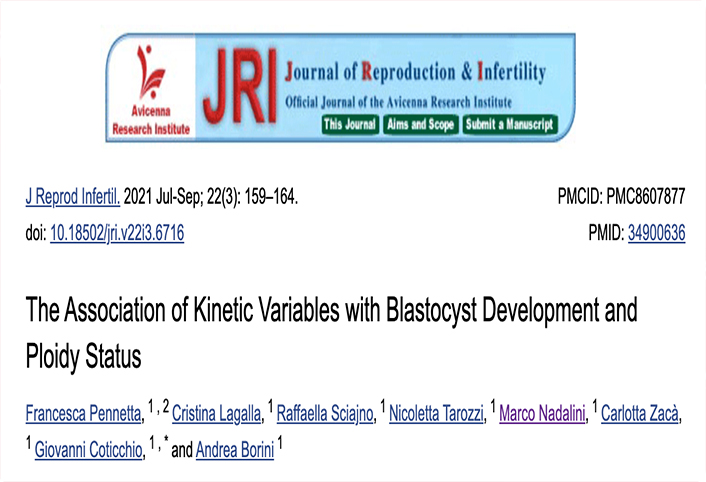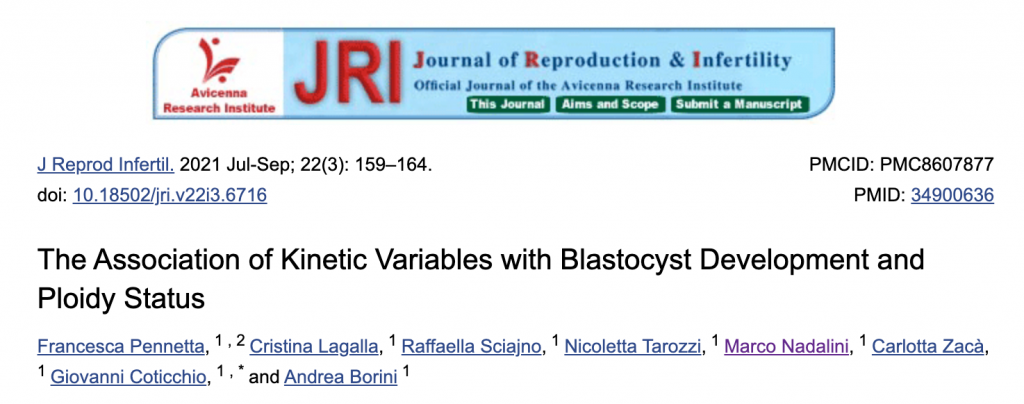
Francesca Pennetta, Cristina Lagalla, Raffaella Sciajno, Nicoletta Tarozzi, Marco Nadalini, Carlotta Zacà, Giovanni Coticchio, and Andrea Borini
J Reprod Infertil. 2021 Jul-Sep; 22(3): 159–164. doi: 10.18502/jri.v22i3.6716
Abstract
Background: Despite a plethora of studies conducted so far, a debate is still unresolved as to whether TLM can identify predictive kinetic biomarkers or algorithms universally applicable. Therefore, this study aimed to elucidate if there is a relationship between kinetic variables and ploidy status of human embryos or blastocyst developmental potential.
Methods: For conducting this retrospective cohort study, the normal distribution of data was verified using Kolmogorov-Smirnov test with the Lilliefors’ amendment and the Shapiro-Wilk test. Kinetic variables were expressed as median and quartiles (Q1, Q2, Q3, Q4). Mann-Whitney U-test was used to compare the median values of parameters. Univariate and multiple logistic regression models were used to assess relationship between blastocyst developmental potential or ploidy status and kinetics. Several confounding factors were also assessed.
Results: Blastocyst developmental potential was positively correlated with the t4-t3 interval (s2) (OR=1.417, 95% CI of 1.288-1.560). s2 median value was significantly different between high- and low-quality blastocysts (0.50 and 1.33 hours post-insemination, hpi, respectively; p=0.003). In addition, timing of pronuclear appearance (tPNa) (OR=1.287; 95% CI of 1.131-1.463) had a significant relationship with ploidy changes. The median value of tPNa was statistically different (p=0.03) between euploid and aneuploid blastocysts (Euploid blastocysts=8.9 hpi; aneuploid blastocysts=10.3 hpi).
Conclusion: The present findings are in line with the study hypothesis that kinetic analysis may reveal associations between cleavage patterns and embryo development to the blastocyst stage and ploidy status.

